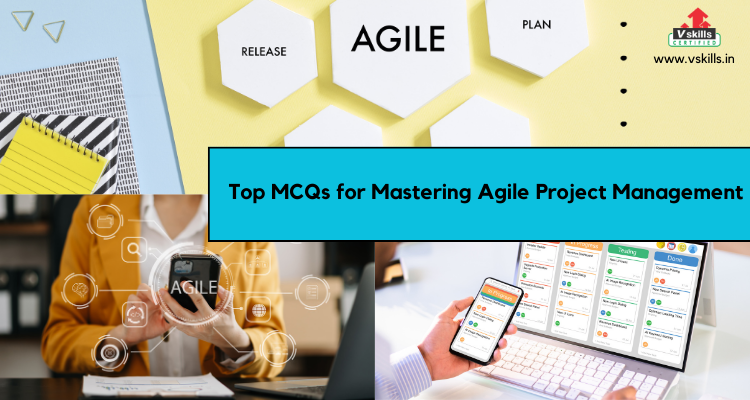Agile Project Management refers to a flexible and iterative approach to managing projects, emphasizing adaptability, collaboration, continuous improvement, and delivering value to customers. It originated in software development but has since been applied across various industries due to its effectiveness in handling complex and rapidly changing projects. Some of the Key characteristics of Agile Project Management include:
- Iterative Approach: Projects are divided into smaller, manageable parts called iterations or sprints. Each iteration involves planning, execution, and review, allowing for frequent adjustments and improvements.
- Flexibility and Adaptability: Agile allows for changes in project requirements, scope, or priorities even after the project has started. It accommodates evolving customer needs and market dynamics.
- Customer Collaboration: Customers or stakeholders are involved throughout the project, providing feedback, clarifying requirements, and validating deliverables, ensuring the final product meets their needs.
- Cross-functional Teams: Agile promotes self-organizing and cross-functional teams. Team members collaborate closely, share responsibilities, and collectively deliver workable solutions.
- Continuous Improvement: Regular retrospectives or reflection sessions after each iteration enable teams to identify areas for improvement, enhance processes, and refine product quality.
- Value-Driven Delivery: Agile focuses on delivering incremental value to customers. It prioritizes features or functionalities that provide the most value early in the project lifecycle.
Common Agile methodologies include Scrum, Kanban, Extreme Programming (XP), Lean, and more. Each methodology has its unique set of practices, roles, and ceremonies designed to implement Agile principles effectively. Let us now look at some of the key topics and related multiple choice questions for Agile Project Management to help you prepare better.
Section 1: Agile Methodologies
Agile Methodologies are a set of iterative and incremental approaches used in project management. They prioritize adaptability, collaboration, and customer satisfaction by breaking down projects into manageable parts. Understanding various Agile Methodologies like Scrum, Kanban, XP, and Lean is crucial. It helps professionals grasp different approaches to managing projects, each offering unique principles and practices. This knowledge aids in selecting the most suitable methodology for a given project, ensuring efficient and effective project execution.
Question: Which Agile methodology focuses on iterative development with fixed-length timeframes called sprints?
a) Scrum
b) Kanban
c) XP
d) Lean
Answer: a) Scrum
Explanation: Scrum utilizes fixed-length iterations known as sprints for development.
Question: Which Agile approach emphasizes continuous improvement, workflow visualization, and limiting work in progress?
a) Scrum
b) Kanban
c) XP
d) Lean
Answer: b) Kanban
Explanation: Kanban emphasizes continuous improvement and visualizing workflow.
Question: Extreme Programming (XP) is known for its focus on:
a) Iterative development
b) Pair programming
c) Continuous integration
d) All of the above
Answer: d) All of the above
Explanation: XP emphasizes iterative development, pair programming, and continuous integration.
Question: Lean methodology aims to:
a) Maximize efficiency by eliminating waste
b) Prioritize individuals and interactions over processes and tools
c) Use fixed-length iterations called sprints
d) None of the above
Answer: a) Maximize efficiency by eliminating waste
Explanation: Lean focuses on eliminating waste to improve efficiency.
Question: Which Agile framework is built around the idea of customer satisfaction through early and continuous delivery of valuable software?
a) Scrum
b) Kanban
c) XP
d) Lean
Answer: a) Scrum
Explanation: Scrum focuses on delivering valuable software in iterations.
Section 2: Agile Roles and Responsibilities
Agile Teams comprise roles like Product Owner, Scrum Master, and Development Team. Each role has specific responsibilities:
- Product Owner: Represents stakeholders, defines product vision, and manages the product backlog.
- Scrum Master: Facilitates the Scrum process, removes impediments, and ensures team adherence to Agile principles.
- Development Team: Self-organizes to deliver increments of working product during sprints.
Understanding these roles is essential for effective collaboration within Agile teams. Clear role definitions ensure smoother workflow, accountability, and efficient problem-solving. This knowledge also helps job seekers match their skills and experience to these roles when applying for Agile positions.
Question: Who is responsible for maximizing the value of the product and the work of the Development Team?
a) Scrum Master
b) Product Owner
c) Development Team
d) Stakeholders
Answer: b) Product Owner
Explanation: The Product Owner is accountable for maximizing the value of the product and managing the backlog.
Question: The Scrum Master’s primary role is to:
a) Manage the project budget
b) Remove impediments and facilitate the Scrum process
c) Write code and oversee development
d) Prioritize user stories
Answer: b) Remove impediments and facilitate the Scrum process
Explanation: The Scrum Master’s key responsibility is to facilitate the Scrum process by removing obstacles and enabling the team to work efficiently.
Question: Which role in Agile is responsible for delivering a potentially releasable increment at the end of each sprint?
a) Scrum Master
b) Product Owner
c) Development Team
d) Agile Coach
Answer: c) Development Team
Explanation: The Development Team is responsible for delivering a potentially releasable increment of product functionality at the end of each sprint.
Question: Agile team members collectively decide how much work they can complete during a sprint. This concept is known as:
a) Sprint goal
b) Backlog refinement
c) Sprint planning
d) Self-organization
Answer: d) Self-organization
Explanation: Self-organization refers to Agile teams determining the amount of work they can accomplish in a sprint.
Question: The stakeholders’ role in Agile primarily involves:
a) Setting project timelines
b) Reviewing the product and providing feedback
c) Leading the daily stand-up meetings
d) Assigning tasks to team members
Answer: b) Reviewing the product and providing feedback
Explanation: Stakeholders participate in product reviews and provide valuable feedback for product improvement.
Section 3: Agile Project Planning and Estimation
Agile planning involves breaking down tasks into user stories, prioritizing them, and estimating effort using techniques like story points. Sprint planning sessions decide which stories to include in a sprint, fostering adaptability and flexibility in project management. Effective Agile planning is fundamental to project success. It enables teams to align their efforts, manage priorities, and deliver value in short iterations. Understanding estimation techniques ensures realistic goal setting and helps teams deliver within the expected timeframes.
Question: In Agile, what is the primary purpose of a user story?
a) To define technical tasks for developers
b) To capture functional requirements from the user’s perspective
c) To document the project timeline
d) To specify detailed project specifications
Answer: b) To capture functional requirements from the user’s perspective
Explanation: User stories focus on describing a piece of functionality from an end user’s perspective.
Question: Which Agile technique involves breaking down user stories into smaller, more manageable tasks?
a) Storyboarding
b) Task decomposition
c) Product backlog grooming
d) Sprint planning
Answer: b) Task decomposition
Explanation: Task decomposition involves breaking down user stories into smaller tasks that can be executed by the team.
Question: What is the purpose of using the Fibonacci sequence (e.g., 1, 2, 3, 5, 8, 13, etc.) in Agile estimation?
a) To prioritize user stories
b) To assign story points for complexity estimation
c) To determine the sprint duration
d) To track individual team member’s velocity
Answer: b) To assign story points for complexity estimation
Explanation: The Fibonacci sequence is often used in Agile to assign story points for estimating the complexity of user stories.
Question: Which Agile planning meeting involves the entire team reviewing and discussing the backlog items to ensure they are well understood and ready for implementation?
a) Daily stand-up
b) Sprint planning
c) Backlog refinement (grooming)
d) Sprint review
Answer: c) Backlog refinement (grooming)
Explanation: Backlog refinement (or grooming) involves the team reviewing and refining backlog items for better understanding and readiness.
Question: What does the term “velocity” represent in Agile project management?
a) The speed at which tasks are completed within a sprint
b) The number of tasks completed during a sprint
c) The capacity of the team to handle tasks
d) The estimated time for task completion
Answer: a) The speed at which tasks are completed within a sprint
Explanation: Velocity in Agile measures the speed or rate at which the team completes tasks within a sprint.
Section 4: Agile Iterative Development and Delivery
Agile employs iterative development through short cycles called sprints. Each sprint delivers a potentially shippable increment. Retrospectives at the end of sprints enable teams to reflect on their performance and make improvements. Iterative development allows frequent feedback, reducing risks and enabling early delivery of valuable features. Continuous improvement through retrospectives fosters team learning and enhances product quality, meeting evolving customer needs.
Question: What is the primary goal of the Sprint Review meeting in Agile?
a) To review and adjust the sprint backlog
b) To discuss impediments and challenges faced during the sprint
c) To inspect the increment and gather feedback from stakeholders
d) To plan the next sprint’s tasks
Answer: c) To inspect the increment and gather feedback from stakeholders
Explanation: The Sprint Review involves reviewing the increment and collecting feedback from stakeholders for future improvements.
Question: Which Agile practice involves the team reflecting on their performance to improve effectiveness continuously?
a) Sprint Retrospective
b) Daily Stand-up
c) Sprint Planning
d) Backlog Refinement
Answer: a) Sprint Retrospective
Explanation: The Sprint Retrospective is a dedicated meeting for the team to reflect on their work and find ways to improve their processes.
What does the term “Minimum Viable Product (MVP)” signify in Agile development?
a) A product with minimal features but sufficient for initial release
b) A product with all possible features included
c) A product without any features but a strong concept
d) A product with only basic functionalities
Answer: a) A product with minimal features but sufficient for initial release
Explanation: MVP represents a product version with essential features to satisfy early customers and gather feedback for further development.
Question: The concept of “timeboxing” in Agile refers to:
a) Estimating project duration
b) Setting a fixed amount of time to complete a task or activity
c) Prioritizing tasks in a backlog
d) Creating deadlines for the team
Answer: b) Setting a fixed amount of time to complete a task or activity
Explanation: Timeboxing involves allocating a specific time frame to complete a task or activity.
Question: What is the primary purpose of the Daily Stand-up (Daily Scrum) meeting in Agile?
a) Detailed status reporting to management
b) Problem-solving discussions
c) To inspect progress and synchronize activities within the team
d) Long planning sessions
Answer: c) To inspect progress and synchronize activities within the team
Explanation: The Daily Stand-up aims to inspect progress, align team activities, and identify any impediments.
Section 5: Agile Adaptability and Collaboration
Agile values adaptability to change and promotes face-to-face collaboration among team members. It encourages a customer-centric approach and values individuals and interactions over processes and tools. The adaptability of Agile methodologies helps teams respond swiftly to changing requirements or market conditions. Strong collaboration fosters shared understanding, quicker problem-solving, and ensures the final product meets customer expectations.
Question: What is the Agile Manifesto primarily focused on?
a) Comprehensive project documentation
b) Tools and processes over individuals and interactions
c) Responding to change over following a plan
d) Negotiating contracts over customer collaboration
Answer: c) Responding to change over following a plan
Explanation: The Agile Manifesto values responding to change as more important than following a rigid plan.
Question: Which Agile principle emphasizes sustainable development and maintaining a consistent pace indefinitely?
a) Deliver working software frequently
b) Welcome changing requirements, even late in development
c) Build projects around motivated individuals
d) Maintain a constant pace indefinitely
Answer: d) Maintain a constant pace indefinitely
Explanation: Agile promotes a sustainable pace of work to ensure productivity and avoid burnout.
Question: In Agile, the term “time-to-market” refers to:
a) The amount of time taken to complete each sprint
b) The duration taken to develop the entire project
c) The speed at which the product reaches the market for customers
d) The time allocated for product testing
Answer: c) The speed at which the product reaches the market for customers
Explanation: Time-to-market refers to the speed or duration required to bring a product to market for customers.
Question: Agile encourages face-to-face communication because:
a) It eliminates the need for documentation
b) It ensures that all team members are always present in meetings
c) It fosters better understanding and collaboration among team members
d) It speeds up decision-making processes
Answer: c) It fosters better understanding and collaboration among team members
Explanation: Face-to-face communication in Agile enhances understanding and collaboration among team members.
Question: Which Agile practice encourages the constant evolution and improvement of processes and teamwork?
a) Sprint Review
b) Daily Stand-up
c) Retrospective
d) Sprint Planning
Answer: c) Retrospective
Explanation: The Retrospective meeting encourages teams to reflect on their processes and find ways to improve continuously.
Understanding these aspects is critical for individuals seeking knowledge or employment in Agile Project Management. It forms the foundation for successful implementation of Agile methodologies in real-world scenarios.
For More Interview questions visit – Vskills Agile Project Management Interview Questions




